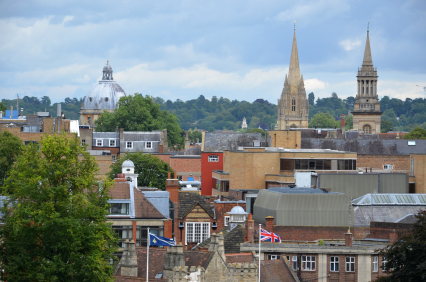 For centuries, Oxford has been internationally renowned as a centre of academic excellence. Today, Oxford’s universities still play an important role in the economic and social life of the city, but we would be wrong to assume that Oxford has nothing else to offer to both residents and visitors. Today, the city is a modern urban centre with an increasingly diverse economic base and an equally diverse demographic profile. In this article we take a closer look to the latest trends observed in Oxford in terms demography, economy, and its industrial sector.
For centuries, Oxford has been internationally renowned as a centre of academic excellence. Today, Oxford’s universities still play an important role in the economic and social life of the city, but we would be wrong to assume that Oxford has nothing else to offer to both residents and visitors. Today, the city is a modern urban centre with an increasingly diverse economic base and an equally diverse demographic profile. In this article we take a closer look to the latest trends observed in Oxford in terms demography, economy, and its industrial sector.
Demographics
As in the case of Cambridge, the population figures in Oxford are highly variable given to the large amount of full-time students that spend term time in the city. According to the latest census, Oxford’s resident population (excluding students) is nearly 152,000 people. Full-time students account for nearly 24 per cent of the total population, amounting to nearly 30,000 people.
Oxford’s population is also known for having the youngest median age of all local authorities in England, with an average of 29.9 years. The number of residents aged 18 to 29 years old is twice as high as the national average, being 32 per cent in Oxford against 16 per cent in the rest of England.
The local population is also characterised by having the highest population turnover levels of any English city, as in only one year (2011) 25 per cent of the censed population moved out of Oxford. Ethnic diversity is another of the main characteristics of the local population in Oxford, since during the last census 28 per cent of residents claimed to have been born outside the United Kingdom.
Oxford’s population experienced high levels of growth during the decade between 2001 and 2011, reaching peak levels of 12 per cent. This means that during those years, Oxford was the sixth fastest growing city in the UK. Demographic projections suggest that continued levels of population growth will be maintained until at least 2019, when the local population is expected to reach 161,000 people.
Economy
Oxford is an important economic centre within Oxfordshire, as seven of the county’s ten largest employers are based in the city. Oxford’s proximity to London, Heathrow, and Cambridge and the city’s excellent transport links make it a very desirable business location. According to the city council, there are approximately 4,000 companies registered in Oxford, which together provide more than 109,000 jobs to residents and to a large number of commuters.
The city is considered an important economic asset when it comes to the national economy too, as Oxford generates £4.7 billion a year and has the UK’s fifth highest GVA per capita, which is currently in the region of £30,800 and well above the national average (£20,300).
Oxford’s increasingly diverse economic base has prompted the appearance of two large business sites: the Oxford Business Park (which occupies 88 acres in the south east of the city), the Oxford Science Park (where more than 40 companies in the science nd technology sectors are based), and Horspath Industrial Estate.
In 2012, the official unemployment rate was 5.8 per cent, significantly lower than the national average for that year, which was 7.8 per cent.
Industry
The public sector is Oxford’s largest industry, mostly employing people in areas like education and health care. Approximately 30 per cent of all jobs in Oxford are created by companies operating in the public sector, a figure that is higher than the UK average, which is 26 per cent. The private sector employs 49 per cent of the local workforce, mostly in areas like services, wholesale and retail, manufacturing, and construction.
Automotive manufacturing has been an important industry in Oxford since the early 1920s, and today remains an important source of income and employment. Publishing is another important economic sub-sector in Oxford.
Recently, a growing number of hi-tech companies have chosen to base themselves in Oxford due to the city’s large amount of highly skilled employees in sub-sectors like bioscience, scientific research, and information technology. In recent years, industrial sectors like software and creative media have also been gaining importance.
Hospitality and tourism are also important industrial sectors in Oxford, as the city receives an average of 9,000 tourists every year. In fact, Oxford is among the UK’s most visited cities, usually ranking sixth in terms of the number of visitors it receives. All in all, the tourist industry contributes with £770 million to the local economy evey year. Tourism and hospitality, together with retail, account for 19 per cent of all the local jobs.
Some of the city’s most important employers are Oxford University (which employs more than 10,000 people), Oxford Brookes University, Oxford Radcliffe Hospital NHS Trust, BMW Manufacturing, Wiley-Backwell, Sharp Laboratories, Oxford BioMedica, PowerMed, Unipart Logistics and Automotive, and Newquest Oxfordshire.

